Disclaimer: Soccer Whizz is a participant in the Amazon Services LLC Associates Program, an affiliate advertising program designed to provide a means for sites to earn advertising fees by advertising and linking to Amazon.co.uk (source: Section 5). As an Amazon Associate I earn from qualifying purchases.
The socks that people wear for soccer are vastly different from your typical pair of casual wear socks.
For starters, these socks are generally a lot longer in length, as they extend way past the calf area all the way up to the knee and sometimes beyond it.
For those new to the sport, you may take a bit of time to get accustomed to how these socks look.
But you’ll probably feel comfortable wearing them in no time at all, particularly if you manage to score a goal or two whilst having them on!
Anyway, this article has been written to cover another angle of soccer socks that’s quite interesting.
This concerns the question of why soccer socks are so tight.
Here’s a simple breakdown that explains the main motive behind manufacturers making this piece of soccer equipment so pressed against the skin:
Soccer socks are designed to be tight so that they can offer performance benefits for players. Tight socks stay in place during the rigors of running, directional changes and kicks of the ball that occur in matches and training sessions. Athletes are therefore able to fully concentrate on their play because the socks aren’t a distraction.
Read on to learn more about this answer and the topic as a whole.
Reasons why soccer socks are tight
You have to admit it.
Most of us play soccer to win.
At the very least, we want to enjoy the game and be entertained.
When it comes to professional play, however, the stakes are a lot higher.
Soccer players at the highest levels of the game therefore need to secure good results for their team, which is why the equipment that they wear must not only offer comfort but performance benefit as well.
That brings us to our first point…
1. Game concentration
Soccer socks are tight on a player’s legs because they need to stay fixed in place for the entire duration of competitive games.
At the elite levels, it only takes a minor lapse in concentration to concede a goal or scoring opportunity to the opposition team.
If the opponent is clinical enough in front of goal, that will negatively impact on a team’s results and overall standing within the division from a points perspective.
Can you imagine a situation where a defender is preparing to deal with an opposition set piece and their socks slide down right at that moment?
This would leave the player in two minds because they’d have to pick their moment to pull their soccer socks back up to knee level, which comes at the risk of losing their marker in the penalty area.
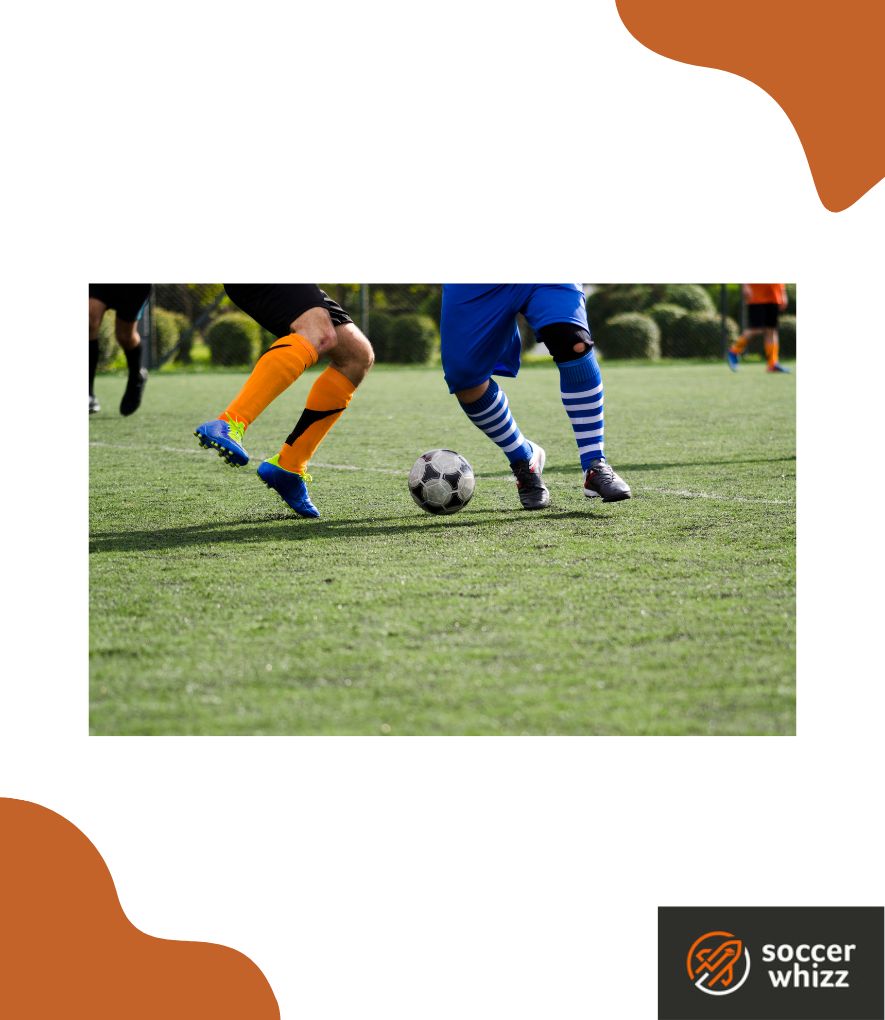
If their socks were to continuously slide down during periods of play, that athlete’s concentration is pulled away from focusing on the defensive aspects of the game, which could be to the detriment of the team as whole.
So, manufacturers make soccer socks with tightness in mind so that players can keep their eyes glued to the players and ball on the pitch rather than their footwear.
The tightness is enough to ensure that the socks stay pulled up during the following situations:
- Running at full pace;
- Changes in direction especially during transitions; and
- Striking contact being made with the soccer ball itself
2. Compression benefits
Soccer socks also offer the benefits of muscle compression due to the tightness of the fabric that they are made from.
Here’s a quote from a reputable publication that backs this up:
“Compression stockings apply pressure to your legs and ankles, which may reduce the diameter of major veins by increasing the volume and velocity of blood flow; help blood flow up toward the heart and help prevent blood from refluxing downward to the foot or laterally into superficial veins.”
Source – Healthline
Again, the key factor of performance is at play here.
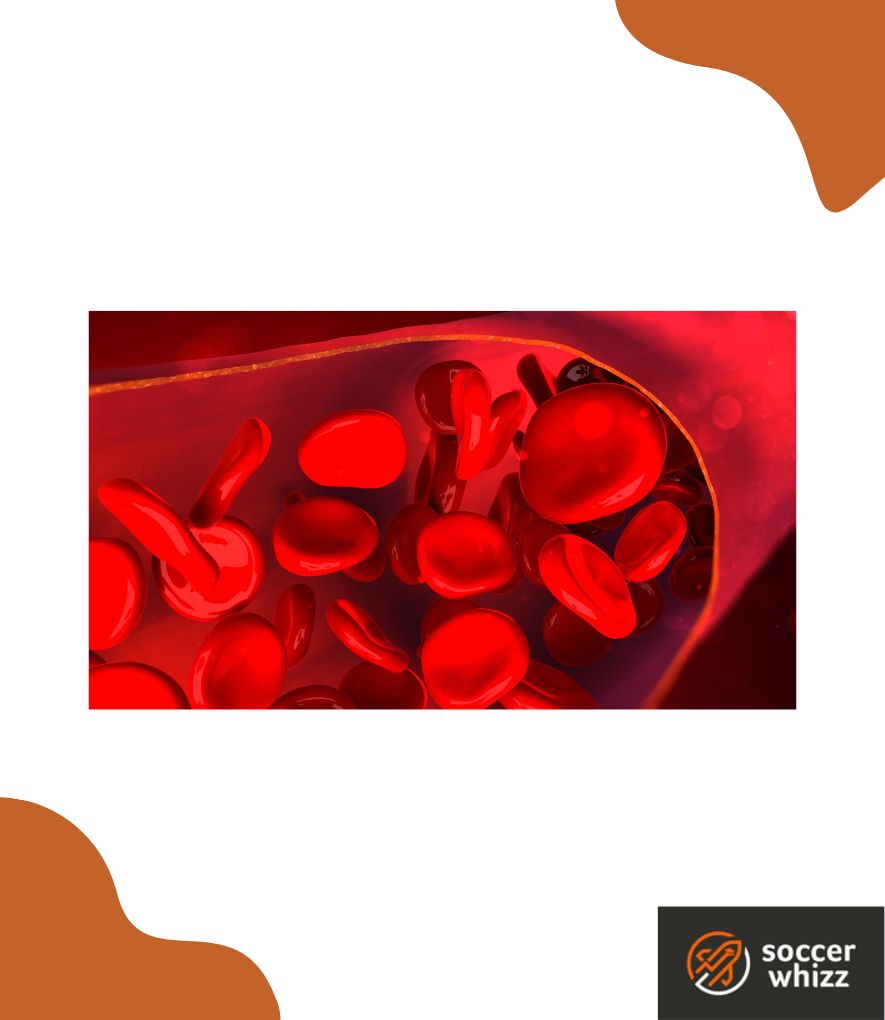
If soccer athletes wear tight fitting socks, they will be able to improve blood flow from their legs to the heart as the pressure put on the legs helps blood vessels work better.
Ultimately, what happens here is that the veins pushing blood back to the heart get a verifiable boost, allowing soccer athletes to endure the rigors of the physically intense game more effectively.
3. Blister prevention
Additionally, soccer socks are usually a tight fit so that blistering can be prevented.
You see, if your feet are moving quite regularly within the sock, the rubbing of your skin against the sock fabric causes friction.
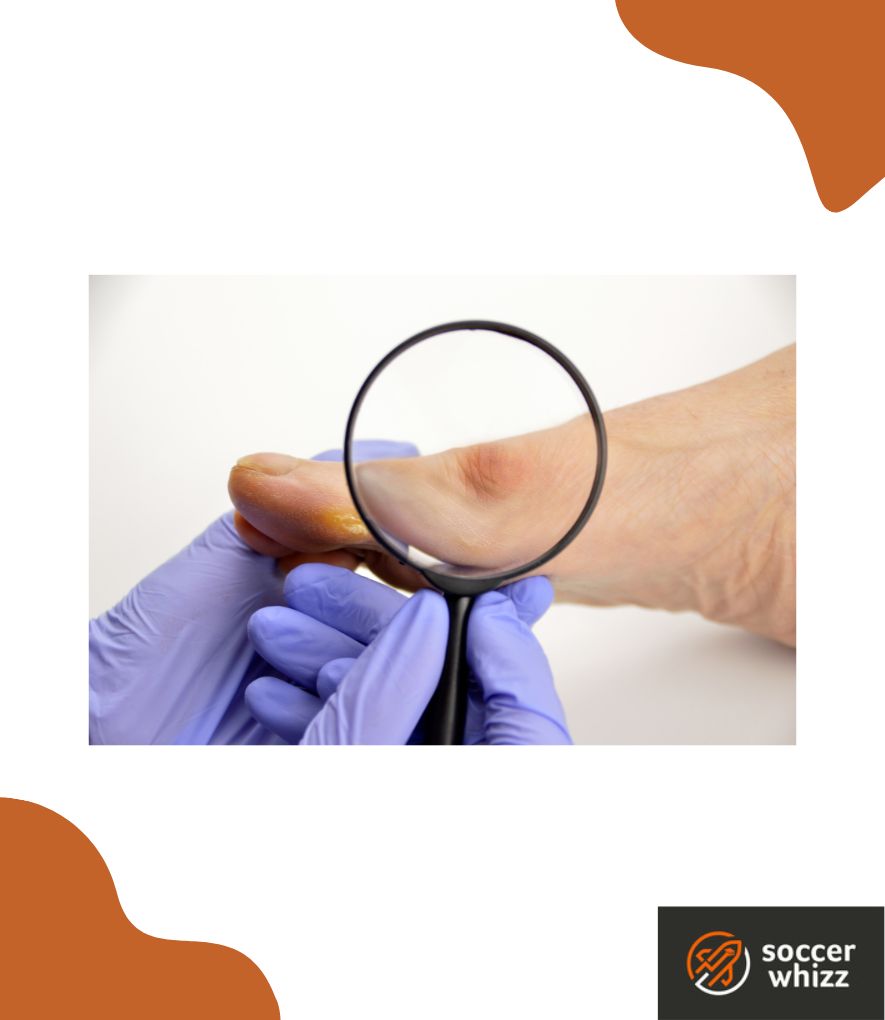
If this friction is abrasive enough, it can damage layers of your skin.
This is why a grip sock called Trusox was created.
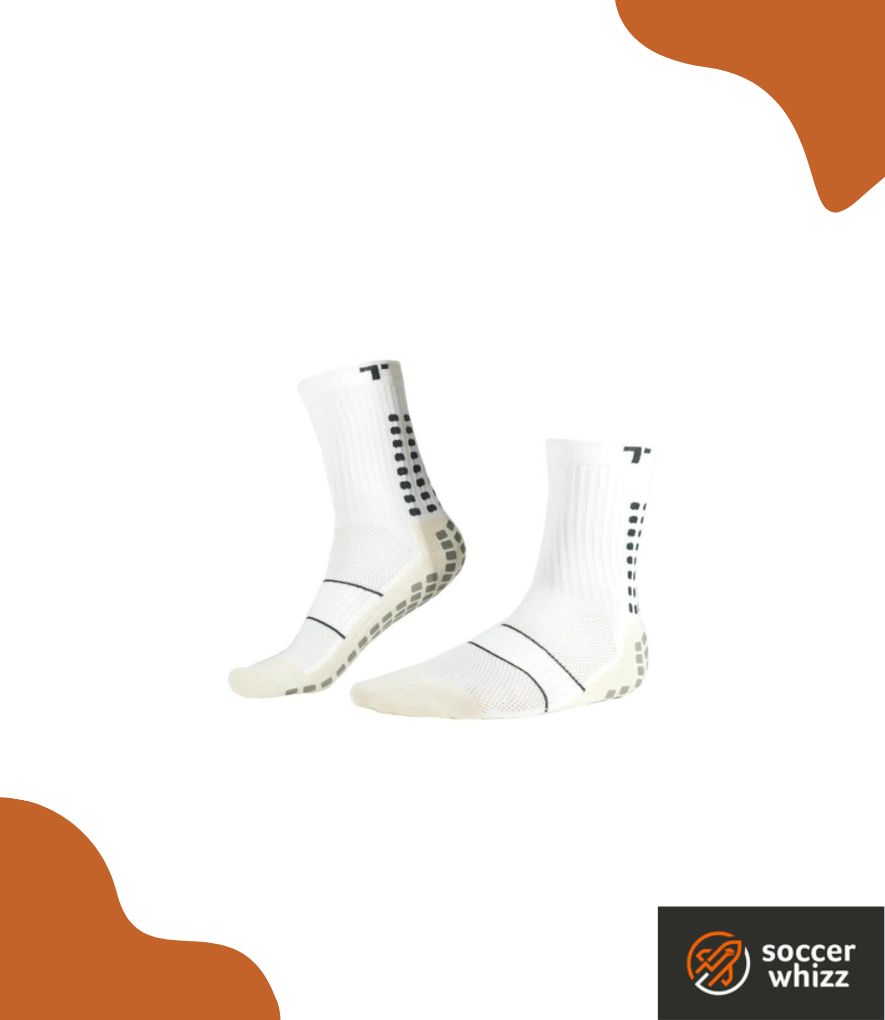
When the founder – Jim Cherneski – grew tired of his feet moving inside of his shoes as he played, he decided to design a sock that would increase grip within the shoe.
Let’s just say the results were revolutionary, as professional athletes in Europe’s biggest leagues immediately took to wearing these socks during matches.
You can grab yourself a pair from the links below:
- MAKE CHANGES IN DIRECTIONS FASTER - non slip socks with INEXtech pads, that appear on both the inside and outside of the sock, secures your foot in TRUSOX and TRUSOX soccer socks are stable in your cleat. You can change direction quicker and more explosively, maximizing the power transfer with NO MOVEMENT IN YOUR CLEAT
- HEEL WILL STAY IN CLEAT - INEXtech non slip pads secure your heel in place and it will not slip out of your cleats during the game or training session
- PREVENT BLISTERS - your feet with grip socks will no longer slide around in your cleats and will reduce the possibility of getting blisters playing soccer, football, rugby, lacrosse, cricket, baseball or basketball
- MAKE CHANGES IN DIRECTIONS FASTER - non-slip INEXtech pads, that appear on both the inside and outside of the sock, secures your foot in TRUSOX and TRUSOX socks are stable in your cleat. You can change direction quicker and more explosively, maximizing the power transfer with NO MOVEMENT IN YOUR CLEAT
- HEEL WILL STAY IN CLEAT - non-slip INEXtech pads secure your heel in place and it will not slip out of your cleats during the game or training session
- PREVENT BLISTERS - your feet will no longer slide around in your cleats and will reduce the possibility of getting blisters playing soccer, football, rugby, lacrosse, cricket or baseball
- Foot grip
- Patented INEXtech technology
- Non-slip Almahodillas
4. Securing shin guards
Finally, soccer socks need to be tight so that shin guards can rest securely on the legs.
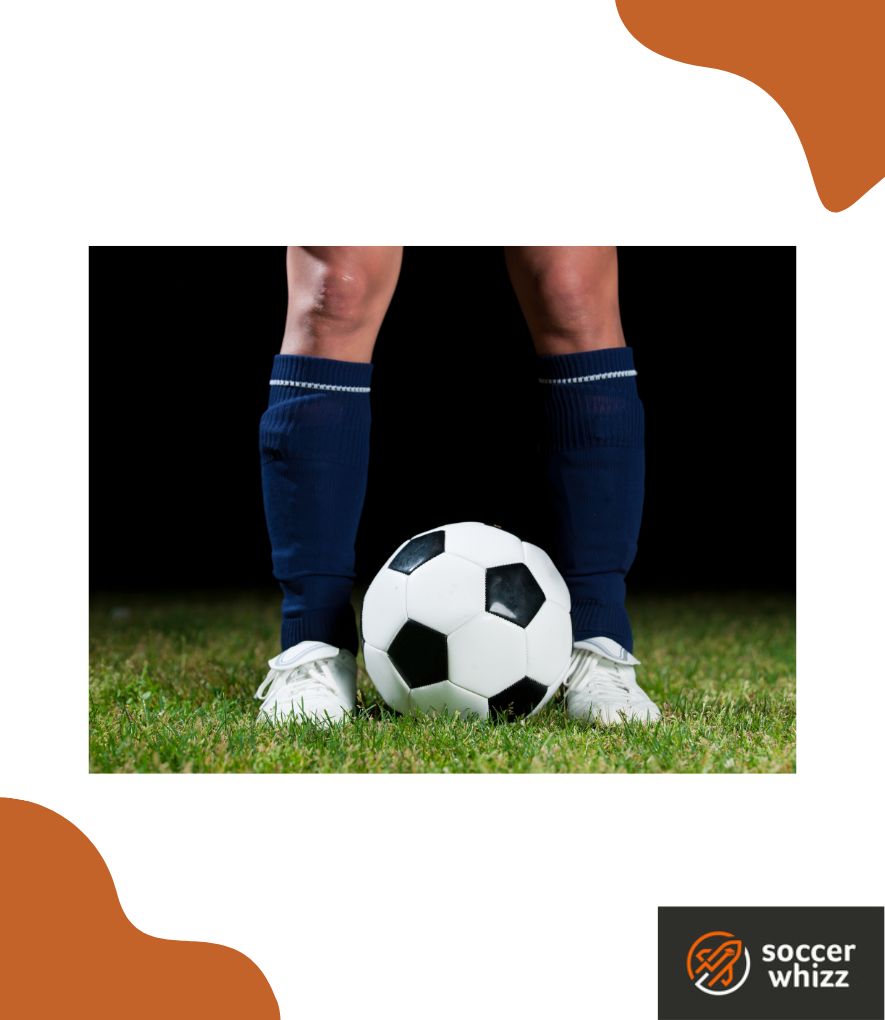
The rules of the game explicitly stipulate that the basic compulsory equipment of a player includes shin guards, which must be covered entirely by the socks.
Therefore, soccer socks need to be tight so that they can keep shin guards in place as players move about on the pitch.
If soccer socks were loose, then shin guards would slip down the legs as they run and make challenges, which would be an injury concern because the guards wouldn’t be in the optimal position to ensure the best leg protection for these athletes.
How tight should a pair of soccer socks be?
With all that said, soccer socks shouldn’t be exceedingly tight.
If they are compact enough to cause discomfort and pain as someone plays, or they affect one’s ability to move freely and change direction easily on the pitch, then they are too tight.
Overall, they should be a snug fit that is easy enough to put on, with just enough room inside for breathability and part of the leg to stretch out.
Conclusion
Now you’re aware of why soccer socks are tight.
If you’ve found this post useful, then you should check out some of our other related posts on the blog, such as:
- What type of soccer socks professional players wear;
- What fabrics soccer socks are made up of;
- Whether soccer socks are the same as compression socks;
- Why soccer socks are very thick;
- Our complete guide on how to wear soccer socks correctly;
- Cutting your soccer socks; and
- The reasons why soccer socks are very long
Alternatively, if you’re after a good pair to buy, then look no further than our informative article on the best soccer socks.
If you enjoy the content that I create and would like to buy me a coffee, then I’d really appreciate it!
Any money that I earn through this donation will be re-invested into more content for this website.
Additionally, by sending in a donation you’ll also receive a copy of my recently released 190+ page eBook on Soccer Ball Care, as well as be subscribed to our mailing list where you’ll be regularly informed on the latest developments concerning the Soccer Whizz blog.
- Future Icons: Europe’s Emerging Midfield Maestros Set for Glory - December 4, 2023
- Kickstarting a Revolution: How Soccer Transformed the United States Over the Last Four Years - October 7, 2023
- 4-1-4-1 Soccer Formation [Analysis] - September 23, 2023




